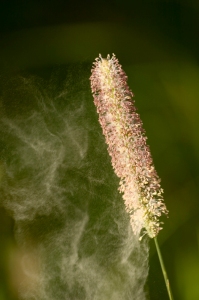Magnolia Aster Lithops etc. Most angiosperms are pollinated by the wind.

Click To View Original Worksheet Plant Life Cycle Worksheet Pollination Parts Of A Flower
Flower parts in groups of four five or multiples of four or five Which of the following floral stem andor leaf characteristics can be used to identify eudicots.

. With the exception of self. Stigmas are large feathery and usually protrude out of the flower. Approximately 20 percent of flowering plants are wind-pollinated.
Nectar and nectar guides are absent. And they have single ovule in each ovary. Wind pollinated plants have small inconspicuous or dull petals - there is no need to attract insects with bright colours.
Usually occur on separate male and. For this reason wind-pollinated plants may be allergens but seldom are animal-pollinated plants allergenic. Thus the correct answer is option D.
This includes oak trees Quercus and many grasses or sedges. Commelina--Class 12BiologySexual Reproduction in Flowering PlantsPre-fertilisation. Which of the following accurately describes pollination.
The ones that are not pollinated by insects are wind-pollinated and the flowers are small. Wind-pollinated plants rely on large quantities of. These small white seeds can detach from the plant and the wind carries them.
Plants that are wind-pollinated have evolved ways to prevent their pollen from being carried too far away from the flower. Features and AppearanceWind-pollinated plants dont depend on the ability to attract birds or insects so their flowers tend to be small drab unscented and inconspicuous. We review their content and use your feedback to keep the quality high.
Pollen produced by wind pollinated plants is of very low nutritional benefit to insects. For example most wind-pollinated plants have long stamens that extend out of the flower head. Experts are tested by Chegg as specialists in their subject area.
Usually have flat blades to direct the wind. Animal-pollinated plants are usually small and not colorful. Which of the following is usually missing in wind-pollinated plants.
When these flowers mature the pollen grains are blown away by the wind and if they happen to fall on the feathery stigma of the flower of the same type pollination occurs. Is orchid pollinated by wind. Trapa and lotus are examples of plants in which pollination occurs through water.
Wind-pollinated plants include apple trees plum trees cherry trees olive trees sycamore trees cottonwood trees willow trees and nutmeg trees. Dandelions have yellow flowers with small petals. A few are pollinated by bats.
Produce dry pollen in large quantities. Theyre also wind pollinated plants. Stamens are generally long and pendulous.
They are small and dull-coloured often without petals. Are usually white and small E. Wind pollinated plants produce a lot of pollen to increase the chances of pollination.
Some plants like maize palm pine etc. Thus the correct answer is option D. In Viola the flowers get pollinated.
Wind pollinated flowers possess the following characteristics. This is how dandelions spread and reproduce. It is also very very light in texture so that it is easily blown on the wind currents.
Their stigmas may be large and feathery to catch the pollen grains. Was this answer helpful. The feathery stigma increases the surface area to capture pollen in the air.
Yashdeep option is incorrect single it is the characteristic feature of the wind pollinated plants that there is a single or dual in the single not many over and over the single oval Hindi this is the correct statement in it needs to be encrypted menu will be kept open hair according to the point where to find interest statement of PNB small and large and not brightly. Most of the flowers that we observe are insect pollinated. In wind pollinated plants pollen grains are light and non sticky they have well exposed stamens and stigma their flowers are small and not brightly coloured.
3 Many ovules in each ovary. Unlike many other groups of flowering plants orchids are not pollinated by wind or water. Are usually green and inconspicuous D.
Structures and EventsWhich of the following is pollinated by DCommelinaOpen in AppSolutionVerified by TopprZostera is the marine seagrass which gets pollinated by waterPollens are released in water and capture by stigmas. Your comment on this answer. Parasitic pollinators develop mutualistic relationships with plants.
Produce stidky pollen C. The flowers of wind-pollinated plants A. Anthers structures where pollen is produced and stigmata structures where the pollen will land often project from the flower in.
Mustard marigold salvia and dahlia are some of the insect pollinated flowers. Insects may visit them to collect pollen but usually are ineffective pollinators and exert little natural selection on.

Insect Pollinators Collect Pollen From Wind Pollinated Plants Implications For Pollination Ecology And Sustainable Agriculture Saunders 2018 Insect Conservation And Diversity Wiley Online Library

Wind Pollination Explained Why Some Plants Don T Need Insects

0 Comments